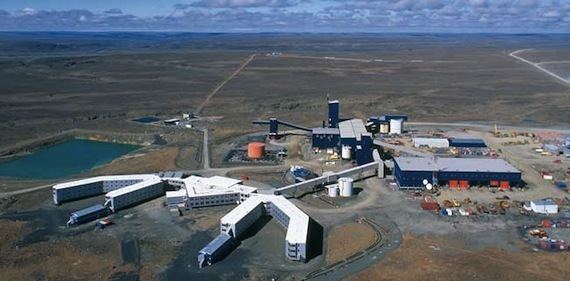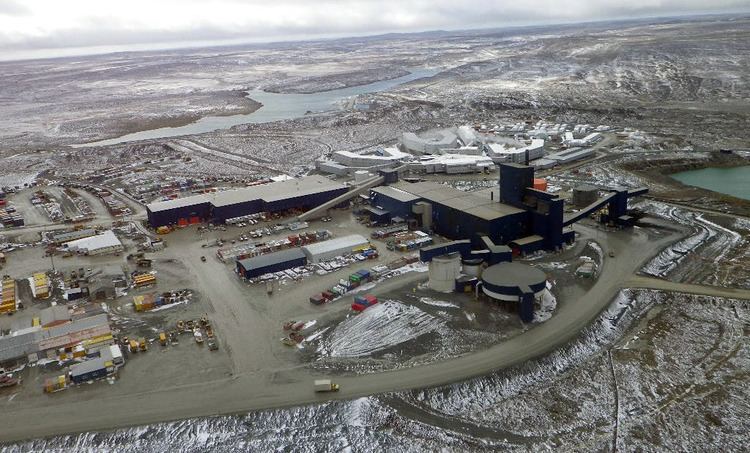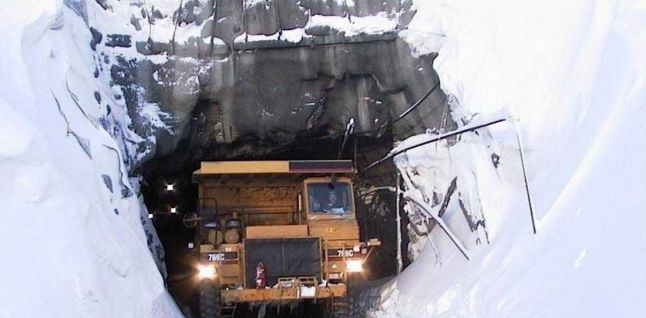Products Nickel | Website Xstrata Province Québec | |
 | ||
Women in mining at raglan mine
Raglan Mine is a large nickel mining complex in the Nunavik region of northern Quebec, Canada. It is located approximately 100 kilometres (62 mi) south of Deception Bay. Discovery of the deposits is credited to Murray Edmund Watts in 1931 or 1932. It is owned and operated by Glencore. The mine site is located in sub-arctic permafrost of the Cape Smith Belt, with an average underground temperature of −15 °C (5 °F).
Contents
- Women in mining at raglan mine
- At glencore raglan mine canada we develop a skilled workforce in mining
- Transportation and accommodations
- Inuit relations
- Safety
- Expansion
- References

At glencore raglan mine canada we develop a skilled workforce in mining
Transportation and accommodations
The complex operates the Kattiniq/Donaldson Airport, operated by Glencore Canada Corporation, which is 10 nautical miles (19 km; 12 mi) west of the mine site. There is a gravel road leading from the mine site to the seaport on Deception Bay. It is the only road of any distance in the province north of the 55th parallel. As the complex is remote from even the region's Inuit communities, workers must lodge at the mine site, typically for weeks at a time. From the mine site employees are flown to Rouyn-Noranda, or in the case of Inuit employees, their home community. Ore produced from the mine is milled on-site then trucked 100 km (62 mi) to Deception Bay. From Deception Bay the concentrate is sent via cargo ship during the short shipping season (even by ice breaker it is only accessible 8 months of the year) to Quebec City, and then via rail to be smelted at Glencore's facilities in Falconbridge, Ontario. Following smelting in Ontario, the concentrate is sent back to Quebec City via rail, loaded onto a ship and sent to Norway to be refined.
Inuit relations
In February 1995 Falconbridge Ltd. signed an Impact and Benefits Agreement (IBA) called the "Raglan Agreement (1995)" with the local Inuit community. Originally the complex was created with the participation of the Inuit owned Makivik Corporation, with the hopes of attracting employment for local residents. Xstrata is working with the Kativik Regional Government and the Kativik School Board to educate the local Inuit population so they will be able to work at the mine, with a goal of the workforce being made up of 20% or more Inuit people. Currently the mines' Inuit work force is close to 17% with most of the remainder being French Canadian from southern Quebec. Given the cultural mix at the complex, ethnic origin and discrimination are significant on-site issues.
Safety
Raglan mine has won the national John T. Ryan Trophy in 2002, for having the lowest accident frequency of all metal mines in Canada. In 2007 it was awarded the F.J. O'Connell award by the Mining Association of Quebec for recording the most improvement of mine safety in Quebec.
Expansion

Raglan currently produces 1.1 million tonnes of ore annually from three underground mines and two open pit operations. The original Impact and Benefits Agreement limits production to 1.3 million tonnes of ore per year, which is expected to be met by the end of 2008. Glencore is currently looking to increase production at the site to 2.0 million tonnes per year by 2013, this would require renegotiating the IBA. The local communities are open to the idea as it will benefit them both in profit sharing and increased direct employment. The expansion will require adding 210 rooms to the current employee accommodations to house the estimated 100 additional employees that will be added.

